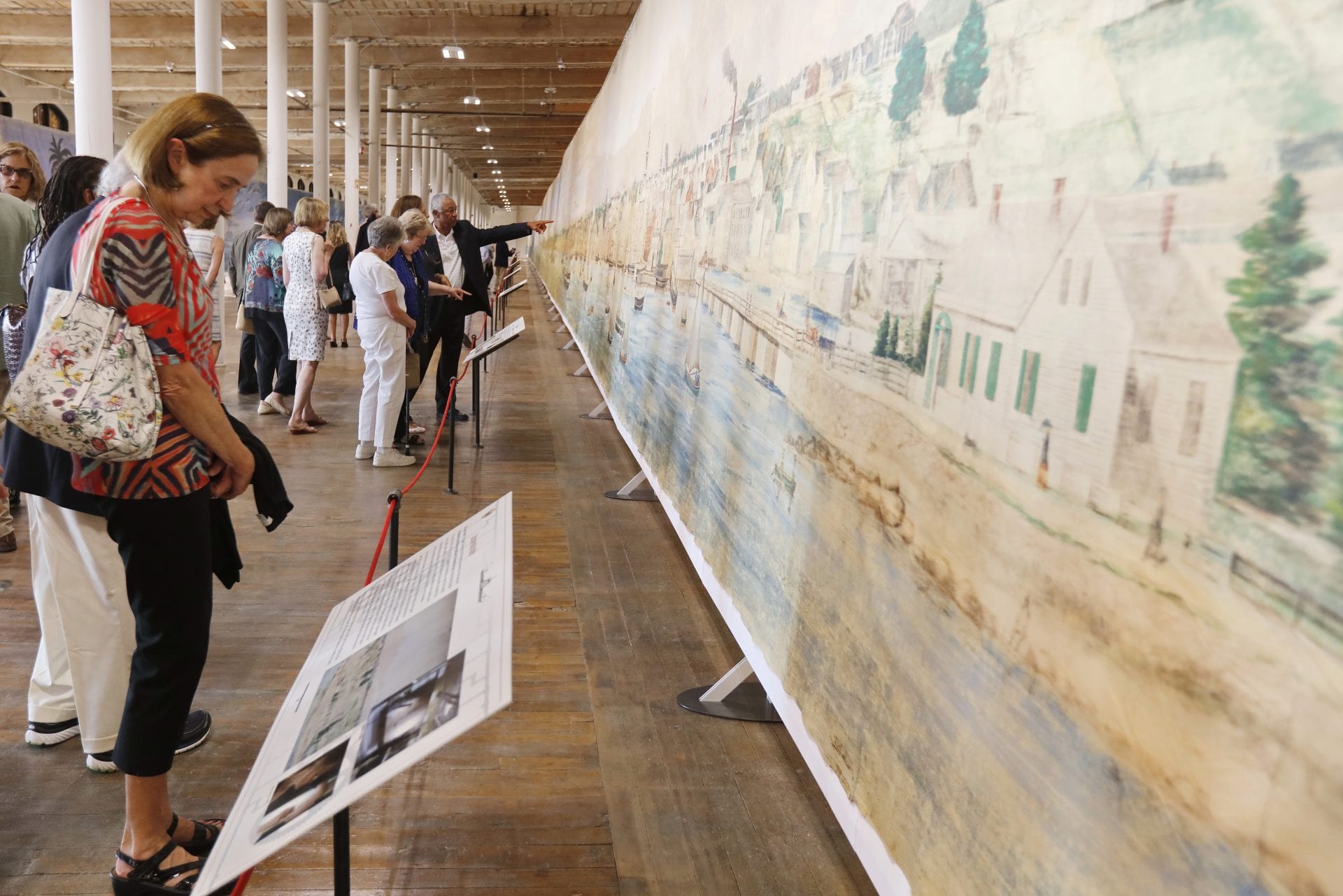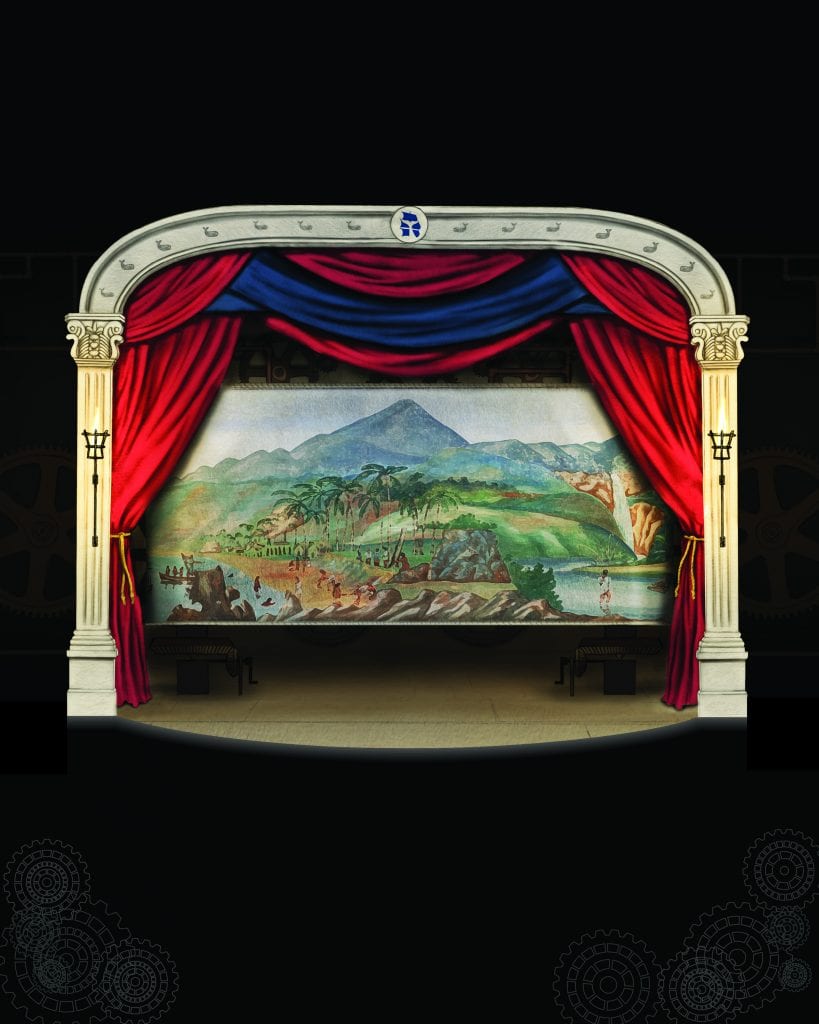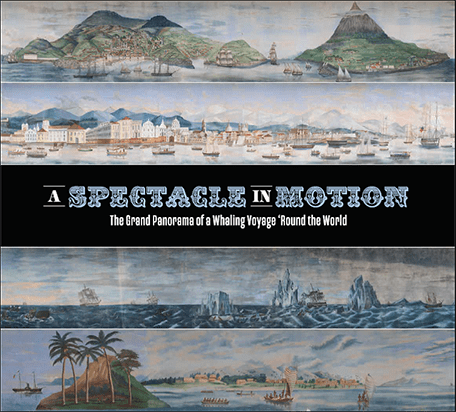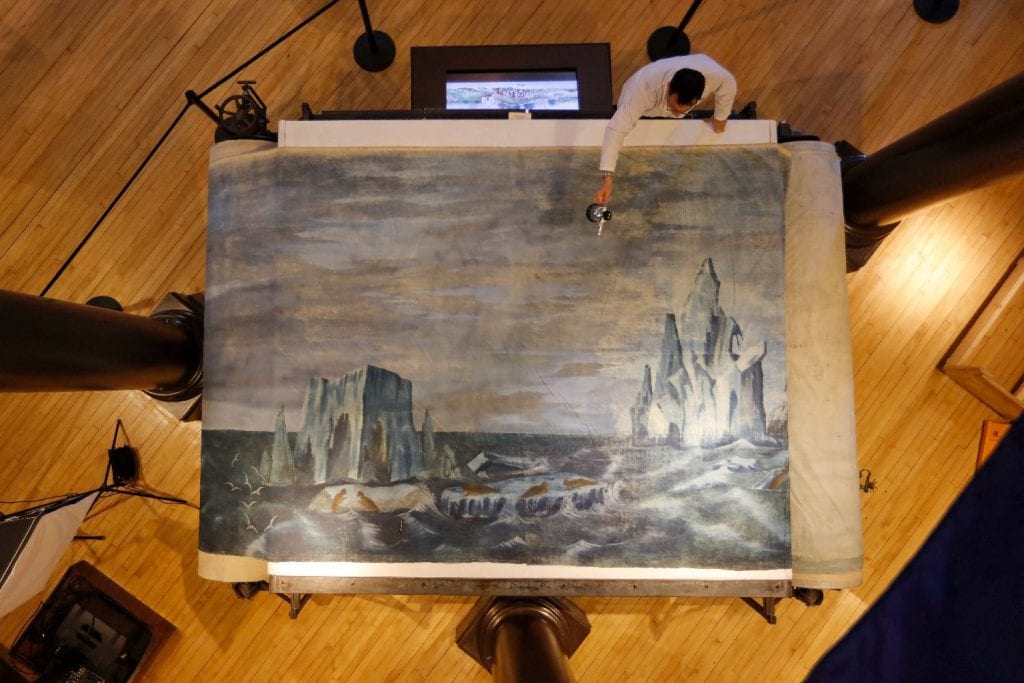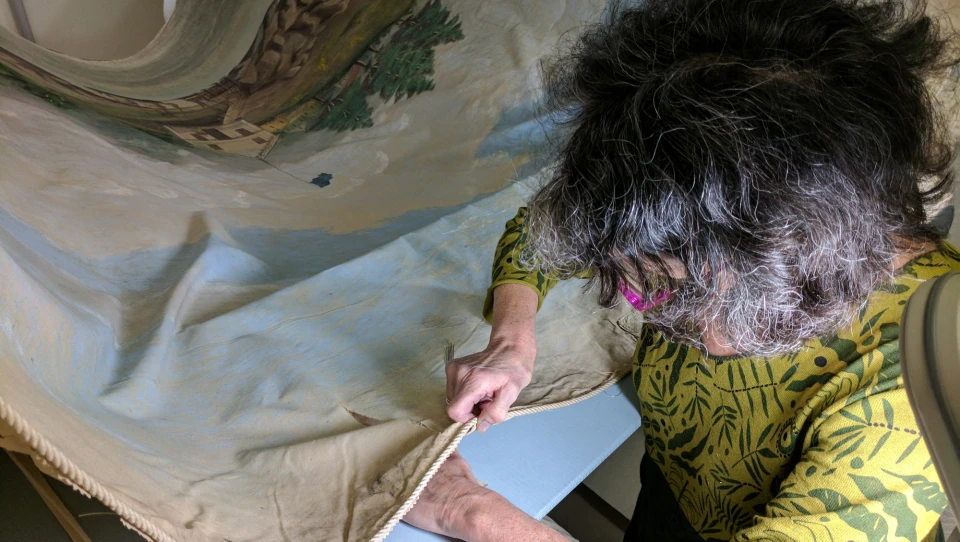The Original: A Spectacle In Motion: The Grand Panorama of a Whaling Voyage ‘Round the World
Kilburn Mill
Opened: July 14, 2018
Closed: October 8, 2018
A Spectacle in Motion is on the road! See scenes from A Grand Panorama of a Whaling Voyage 'Round the World through March 22, 2021 at Mystic Seaport Museum.
The exhibition presented America’s longest painting – longer than the Empire State Building is tall. All 1,275 feet of the Panorama was on exhibit to awe visitors. This was the first time in generations that the entire Panorama could be seen by the public.
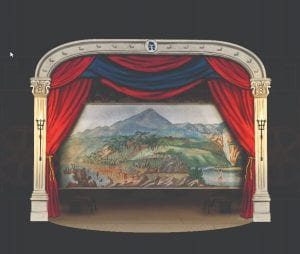
Photo of "The Grand Panorama of a Whaling Voyage 'Round the World" by Benjamin Russell and Caleb Purrington.
Set amidst an historic textile mill in New Bedford, visitors were able to travel around the world and back in time without ever leaving the city. The exhibition also featured interpretive panels and kiosks to enrich the context and content of the Panorama. (Free and open to the public, 7 days a week with shuttle service between the Museum and Kilburn Mill, 127 West Rodney French Blvd., New Bedford)
The Panorama is a maritime artwork of national historical importance, authentically depicting a whaling voyage originating from the port of New Bedford in the mid-19th century. It was painted in 1848, by New Bedford artists Caleb Purrington and Benjamin Russell, who traveled it around the country as a commercial enterprise.
The panorama as a form of public entertainment was developed in Europe in the late 18th century and subsequently made its way to the United States after demonstrating its commercial potential to an armchair traveler audience. A “panorama” as defined by Robert Barker, who patented this exhibition style, means “all view.” He felt that spectators should feel like they were “really on the very spot,” that they should feel as if they were part of the scene in a surrogate reality, an imaginary “Grand Tour” of the world.
In the late 1840’s and early 1850’s (proceeding the age of cinema) the Panorama was designed and performed as a moving panorama, a form of entertainment where multiple scrolls moved across a stage similar to how a reel-to-reel film would later be shown. After years on display, the wear and tear on the 170-year old painting was so extensive that it was deemed worthless and impossible to conserve.
After decades of conservation planning and method strategy research, the Museum brought this national treasure back to life and is proud to share it with the public. However, due to the extensive conservation efforts that have been invested into the painting, it will no longer be shown in its original format – as a moving panorama – as this would undo the extensive work recently completed.
The Panorama drew crowds in the era of public entertainment before moving pictures and films. To celebrate this origin, the exhibition was coupled with dynamic and engaging programming. Live performances, contemporary artistic presentations, and other unique interpretations accompanied educational programs and cultural celebrations.

A MUSICAL FINALE
A free musical performance, open to the public, was held on the last weekend of the exhibition at Kilburn Mill. Tom O’Leary and Simon Xerxes White performed original music to accompany the whalemen’s journey depicted in the Grand Panorama of a Whaling Voyage ‘Round the World. A special 22-minute video of the Panorama in motion formed a backdrop for the performance.
Through music, Tom and Simon captured a spark of historic New Bedford’s pioneering and steadfastly adventurous spirit. Music lightened and propelled the lives of whaling folk. During voyages like the one depicted in the Grand Panorama, home-spun shanties would entertain and sooth sailors at sea, and in their dangerous journeys sailors would have encountered music of far-flung cultures, not to mention sounds of nature and the ever-changing seas.

Just How BIG is the Panorama?
The Grand Panorama of a Whaling Voyage ‘Round the World by Benjamin Russell and Caleb Purrington is 1,275 feet long. That is ¼ acre of fabric!
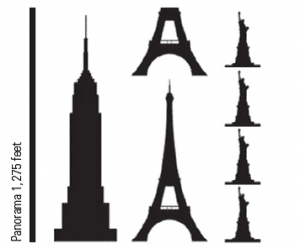 1 Panorama equals =
1 Panorama equals =
14 Blue Whales
17 Lagodas
28 School Buses
Compare the Panorama to:
- The Empire State Building
- The Eiffel Tower
- The Statue of Liberty
